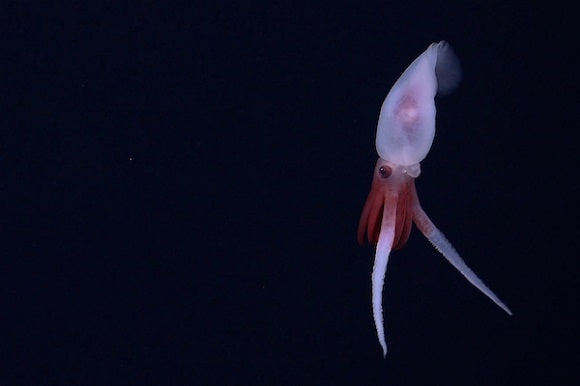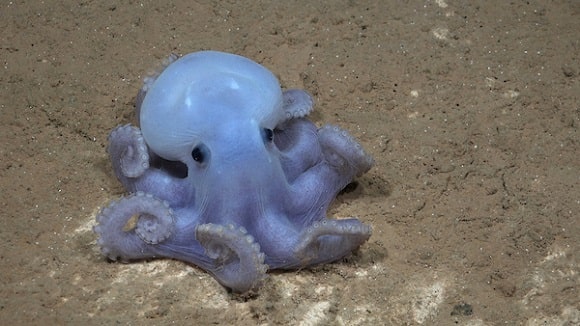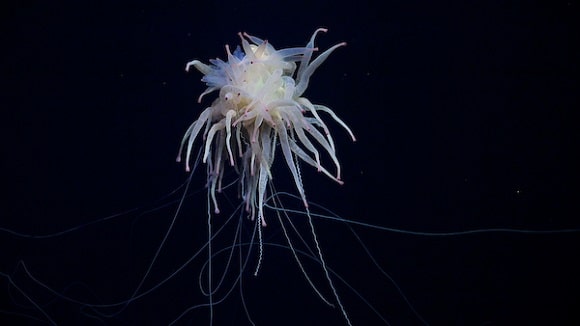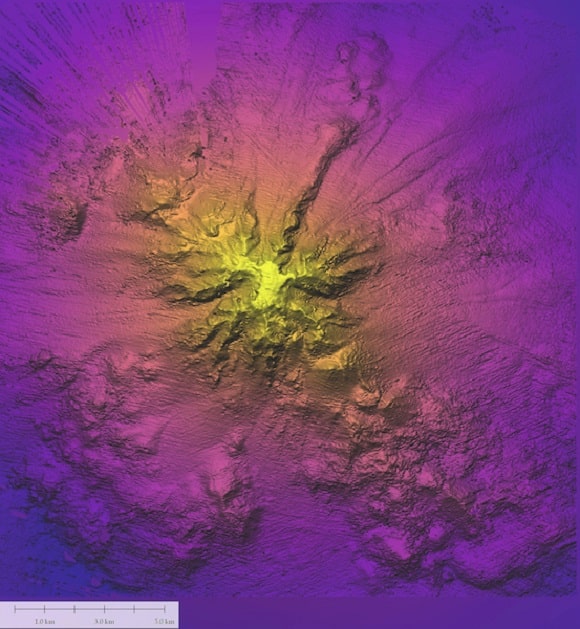In a groundbreaking ocean exploration mission, scientists have discovered a new seamount and previously unknown species in the high-priority marine protected area of the Pacific Remote Islands.
The discovery, spearheaded by the Schmidt Ocean Institute aboard its research vessel R/V Falkor (too), underscores the urgent need for increased conservation efforts in this ecologically significant region.
Landmark Expedition in the Central Pacific

The Schmidt Ocean Institute, a leading organization in deep-sea exploration and marine conservation, recently concluded a 30-day expedition, approximately 900 miles of the coast of Chile.
The team, using cutting-edge remote sensing technologies and submersible devices, surveyed the central Pacific’s uncharted seafloor in a region covering nearly 6,000 square kilometers.
This mission marks one of the most extensive marine surveys conducted in the area, revealing a seamount rising over 3,000 meters (1.9 miles) from the seabed—a massive structure not previously documented.
High-Biodiversity Habitat
The survey area, designated a high-priority marine protected region by international conservation bodies, houses an array of marine species and complex ecosystems.
This new seamount serves as a habitat for various deep-sea organisms, including coral and sponge species that scientists believe are essential for biodiversity and ecosystem health.
The steep seamount slopes and nutrient-rich waters provide a habitat conducive to species growth and diversification, with some species showing evidence of adaptations unique to the area’s extreme depths and conditions.
Exciting Discoveries of New Species
Among the most exciting discoveries was an 800-square-meter coral garden—about the size of three tennis courts—teeming with life on one of the newly mapped underwater mountains.
This pristine coral garden, nestled in a deep-sea environment, serves as a habitat for an array of organisms, including rockfish, brittle stars, and king crabs.
The diversity observed within this coral garden indicates the seamount’s importance as a biological hotspot, supporting species that play crucial roles in the deep-sea food web.

Another remarkable find was the first live camera footage of a Promachoteuthis squid, a genus so rare that only three species have been described, with specimens dating back as far as the late 1800s.
Previously, this squid genus was only known from dead specimens collected in fishing nets, making this live observation a groundbreaking achievement in marine biology.
Scientists believe that studying this squid in its natural environment could reveal much about its behavior, ecology, and adaptations to the deep-sea habitat.

Additionally, the team documented a Casper octopus in the Southern Pacific, marking the first time this species has been seen in this region.
Named for its ghostly, translucent appearance, the Casper octopus has become a symbol of the unique and fragile life forms found in the ocean’s depths.

The team also encountered two rare Bathyphysa siphonophores—often called “flying spaghetti monsters” due to their long, stringy appendages—whose ethereal forms add to the intrigue of the deep-sea biome.
These discoveries underscore the potential for marine ecosystems in these underwater mountain ranges to harbor a vast diversity of life, including previously unknown or undocumented species.
Cutting-Edge Technology and Methods

Equipped with high-resolution multibeam mapping technology and remotely operated vehicles (ROVs), the Falkor (too) enabled researchers to observe the underwater landscape and inhabitants in unprecedented detail.
This equipment allowed scientists to sample specimens from extreme depths, where pressures are more than 400 times those at the ocean’s surface.
These advanced technologies are proving essential to uncovering the mysteries of deep-sea habitats that were previously inaccessible to scientific study.
Global Implications for Marine Conservation
The findings from this expedition are expected to have a lasting impact on marine conservation policies.
Discoveries like the new seamount and unique species in protected areas underscore the importance of conservation and international collaboration.
The Schmidt Ocean Institute’s exploration aligns with the United Nations’ commitment to conserving at least 30% of the world’s oceans by 2030, an effort to protect fragile ecosystems and mitigate the effects of climate change and human exploitation.
Future Exploration and Research
The Schmidt Ocean Institute is committed to further exploring the Pacific Remote Islands and other under-explored regions of the ocean.
The organization’s ongoing missions aim to expand knowledge of marine biodiversity, which is critical for the effective management of marine protected areas.
Future expeditions will continue mapping the seafloor, cataloging species, and contributing valuable data to global conservation initiatives.
This latest discovery marks a significant milestone in deep-sea exploration, with the new seamount and unknown species contributing vital information to marine science and conservation efforts worldwide.
FAQ: Seamounts and Their Ecological Significance
What is a seamount?
A seamount is an underwater mountain formed by volcanic activity, often rising over a thousand meters from the ocean floor but not reaching the ocean’s surface.
These structures are distributed across all of Earth’s ocean basins, with an estimated 100,000 seamounts scattered around the globe.
How are seamounts discovered?
Seamounts are often discovered using advanced mapping technologies such as sonar and high-resolution multibeam echo sounders, which measure underwater topography.
Remote-operated vehicles (ROVs) and other underwater submersibles can then capture detailed images and samples, allowing scientists to study these structures in greater depth.
Why are seamounts important?
Seamounts are ecological hotspots that support high biodiversity.
Due to the nutrient-rich waters that flow around them, seamounts foster unique ecosystems and provide habitat and breeding grounds for a variety of marine life, including corals, fish, and invertebrates.
These ecosystems are crucial for maintaining the balance of the ocean’s food web, supporting species from plankton to large predatory fish and mammals.
What role do seamounts play in oceanic ecosystems?
Seamounts play a critical role in enhancing local biodiversity by serving as “stepping stones” for marine species, enabling them to disperse across otherwise inhospitable expanses of the ocean.
They create unique current patterns, bringing up nutrient-rich water from deeper layers, which fuels plankton growth.
This, in turn, attracts larger organisms, making seamounts vital feeding grounds for many species.
Are seamounts being protected?
While some seamounts are protected under marine conservation efforts, many remain unprotected.
Due to their ecological importance and vulnerability to human impacts like deep-sea mining and fishing, conservation groups advocate for their protection.
International initiatives, like the 30×30 conservation goal, aim to safeguard at least 30% of the world’s oceans by 2030, which would include key seamount habitats.
Why do scientists study seamounts?
Studying seamounts helps scientists better understand marine biodiversity, species adaptation, and oceanic ecosystem functions.
Research on seamount ecosystems can inform conservation policies, sustainable fisheries, and even climate regulation strategies, as seamounts play a role in carbon sequestration.
Additionally, certain species found on seamounts hold promise for biotechnological and medical applications, such as novel compounds for pharmaceuticals.
Sources Used in This Article
Featured image courtesy of Schmidt Ocean Institute

